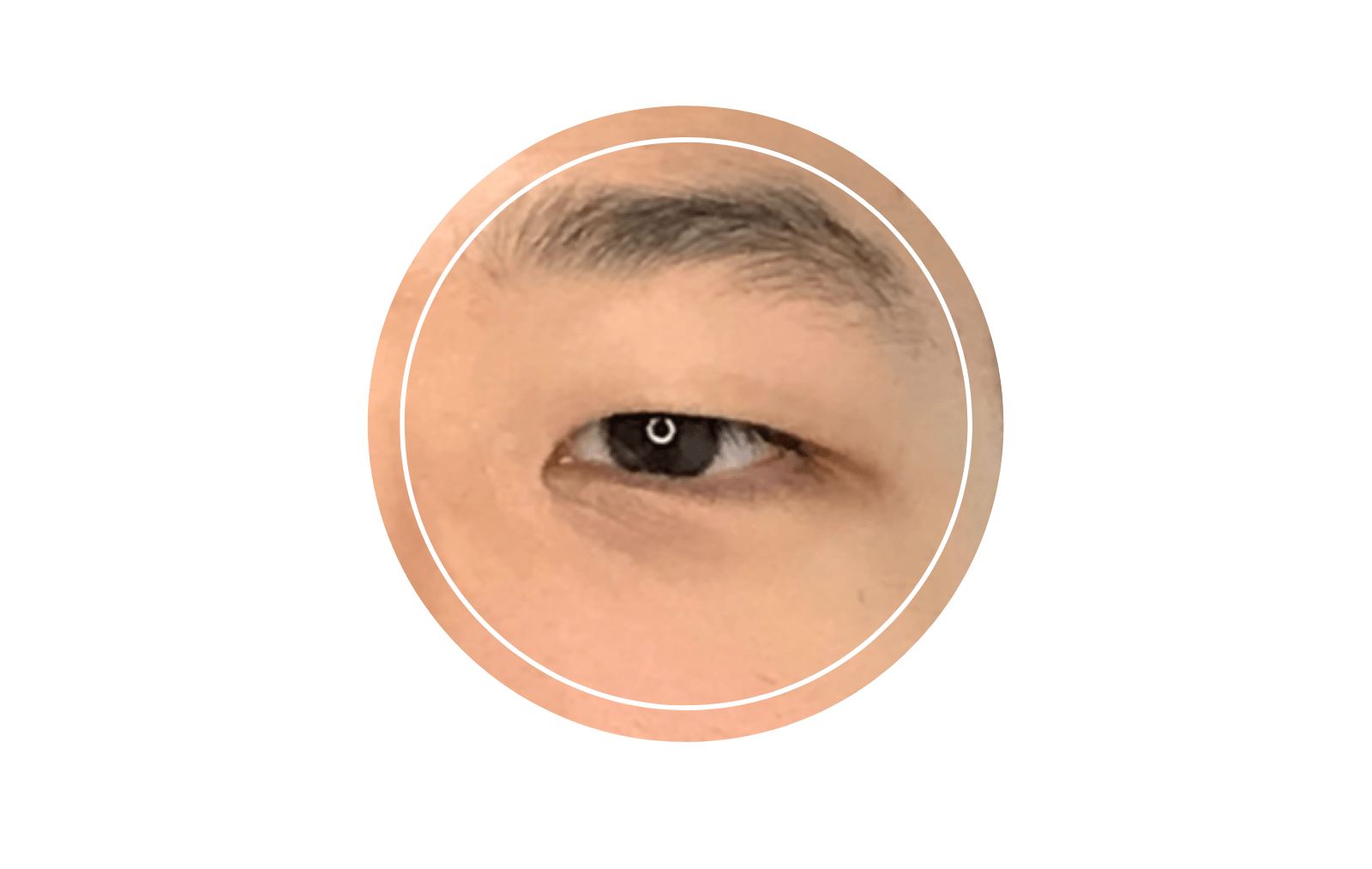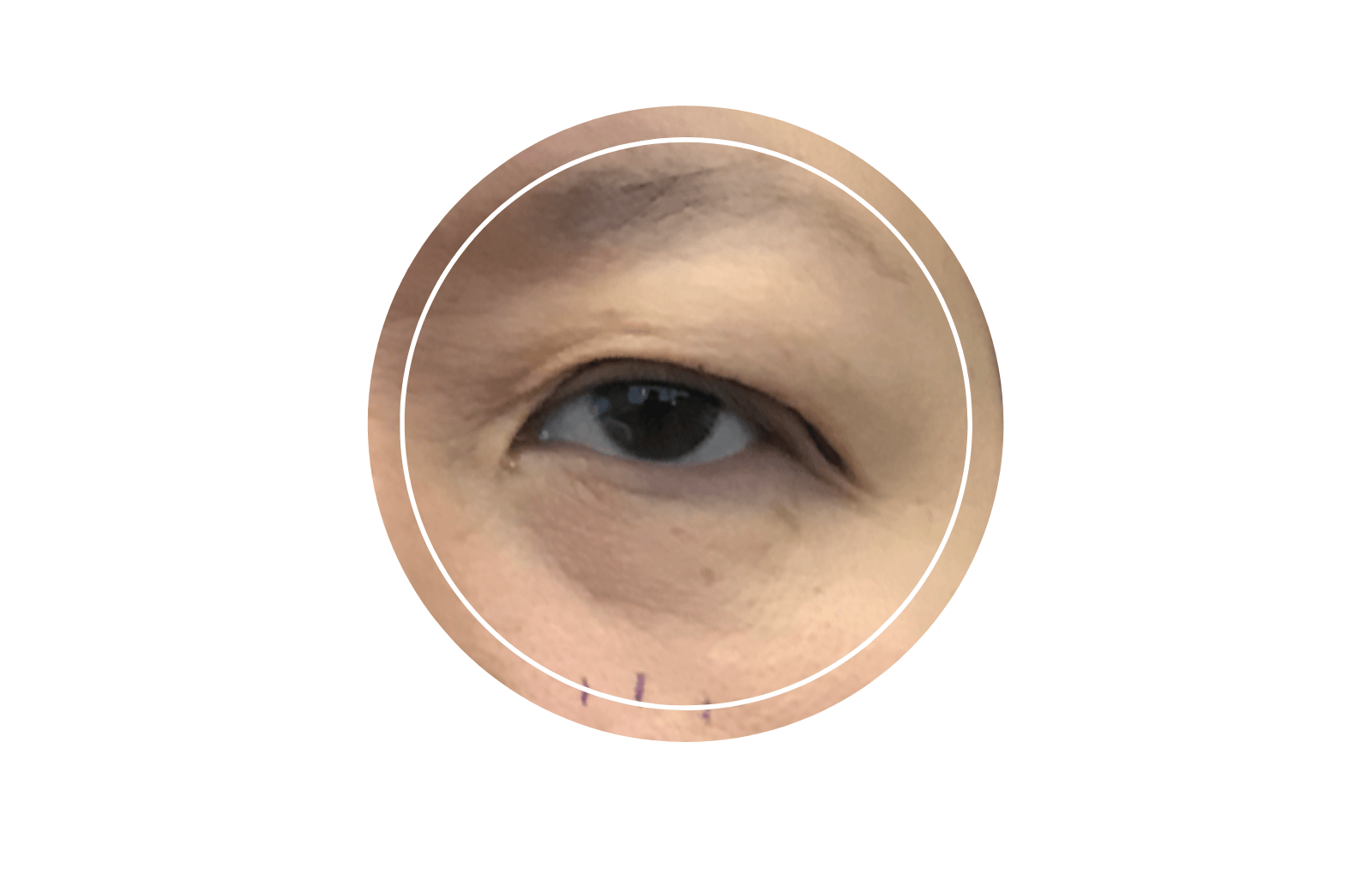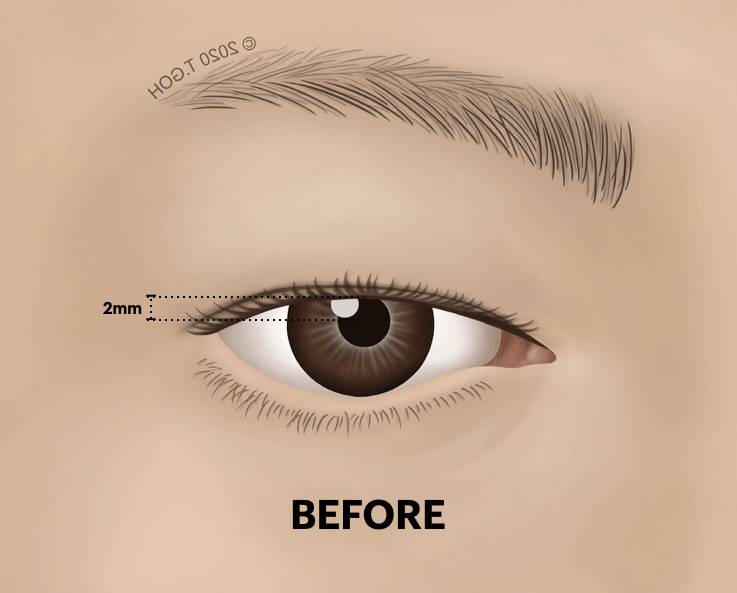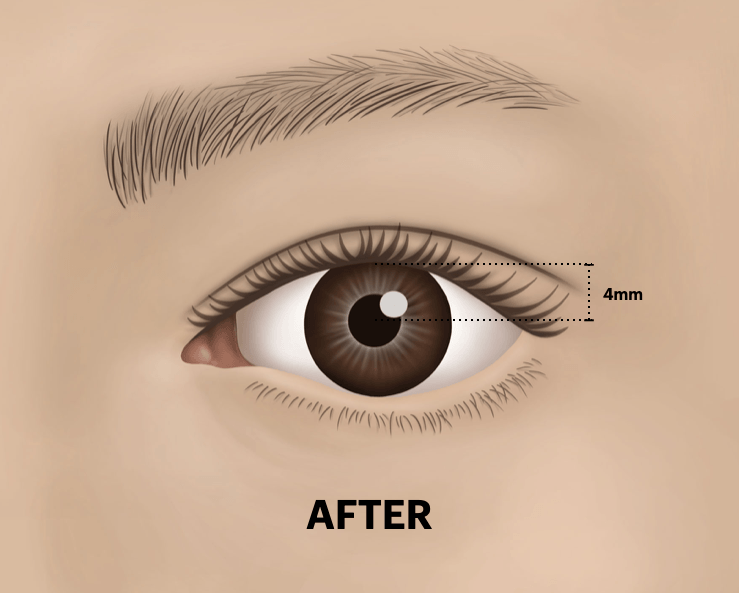Ptosis Surgery
REPAIRS DROOPY EYELID,RESHAPES THE EYE
What Causes
Droopy
Eyelids?
Ptosis is cause by a weakness in the levator mechanism
Ptosis is a condition that occurs when the upper eyelids droop and starts to cover the pupil. This can occur on one side or both. This is usually caused by stretching or thinning of the tendon between the levator (muscle that raises the eyelid) and the eyelid. When the tendon is stretched, the muscle has to work harder to lift the eyelid. This leads to eyelid heaviness, and symptoms of forehead or eyelid tiredness. Weakness or injury to this muscle can also cause droopy eyelids.
Common causes of ptosis include:
Congenital ptosis
Trauma
Nerve conditions
Degeneration/ old age
Pseudptosis
Depending on the severity of the ptosis, if the vision is obstructed, this may be covered by insurance of Medisave.
Ptosis Surgery repairs the muscle

Monolids can occur on one side or both and can be associated with subclinical or mild ptosis giving an asymmetrical look or a sleepy look.

Bilateral droopy eyes commonly occurs in young patients with multiple creases or poorly formed creases. Patients are bothered by the sleepy appearance, asymmetry of the eyelids and non-aesthetic eye-shape. This can also related to symptoms of eye fatigue.

Bilateral droopy eyes can occur in older patients with excess upper eyelid skin or heavy bulky eyelids. This is often related to symptoms of eye fatigue and headache.



